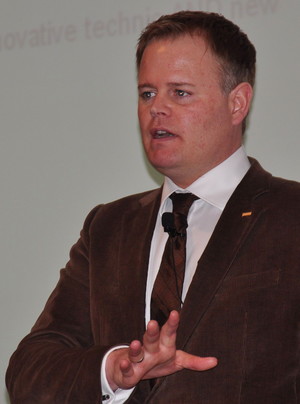Druckzentrum Nordsee invested about 26 million euros in a new plant and equipment in 2006 and commissioned the plant in October of 2008.
"But you don’t make that kind of investment without knowing what types of products you want to produce,” says Mr. Ditzen-Blanke. “I mean, we realised that over the next 10 to 20 years we will probably lose (newspaper) circulation just considering the demographics, so we had to have an idea of the effectiveness of the presses, their processes, and what other products we could offer.”
But the high level of automation of the Cortina and plant meant that Druckzentrum Nordsee was able to reduce its manpower from 106 to 43, more than halving its labour costs.
The automatic plate change on the Cortina takes about five minutes per change, whereas the classic case would take 15 minutes.
“That saves us about 45 minutes in production, which allows us to use that time for another job, reduce our deadlines and get products out quicker, or extend deadlines,” Mr. Ditzen-Blanke says.
The plant is also equipped with Krause X Jet CTP devices, newsreel guided vehicles, and comprehensive Ferag mailroom equipment.
Since the waterless printing process gives the company a more stable print run, it allows it to only have one person to man the press and minimal help elsewhere. Manual operations include conveyance to the print store and unwrapping the reels. “You have to look at where automation makes sense in your own operations,” he advises.
In the future, the company plans to print flexible formats (Rhine / Berliner), use different paper, variable cutoffs, offer possibilities for finishing, trimming, etc., better quality and ecology (less waste).
But technological advancements come with growing pains, he warns. “You have to incorporate integrated training of your staff when you make such technological leaps, or the consequences can be grave.”




